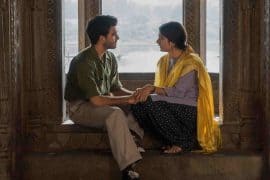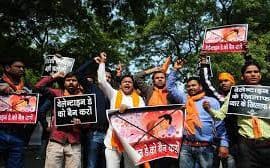2017 has come to a close and as we welcome 2018. On this occasion let us look at some facts, figures, and statistics regarding India’s performance in the past year and think about what could have been done to raise India’s position on the ladder.
While India’s economic growth rate has attracted attention across the world, its recent slowdown has raised the eyebrows of analysts and economists. Despite growth in the business and investment sectors, India continues to grapple with the long-drawn and basic problems of hunger, poverty, corruption, climate change, and poor levels of human capital. The credit rating company, Moody’s Investors Services, upgraded India’s investment ranking from the lowest to one notch up. In the ‘ease-of-doing-business’ rankings, India witnessed a 30-spot rise from 130 to 100. Some analysts have called these improvements long overdue while others have credited Prime Minister Modi’s concerted action on the structural front in the economy for these recent developments. Due to various reforms in the audit and banking sector and the introduction of the Goods and Services Tax (GST), bill the economy is undergoing various upturns which are expected to lead to a stronger and well-integrated economy. Modi’s initiatives, like Startup India, Digital India, MakeinIndia etc., are also credited for India’s better performance in foreign direct investment (FDI) inflows and innovation and competitiveness indices overall. There still persist the overwhelming problems of red-tapism, infrastructural bottlenecks, overregulation, and implementation issues for which immediate reforms must be undertaken by the government. On the other hand, what these business rankings overshadowed were India’s downslide in gender equality, hunger, press freedom, and inequality reports.
India slipped 21 places in the Global Gender Gap ranking for 2017. The Global Hunger Index ranked India 100 out of the 119 countries listed, behind North Korea, Bangladesh, and Iraq but ahead of Pakistan. A paper by Thomas Piketty and Lucas Chancel titled Indian Income Inequality 1922-2014 — From British Raj to Billionaire Raj? pointed out the widening income disparities which endanger social stability. These reports did not invite many hues and cry from the analysts as they show India’s status on fairness, equity, and empowerment rather than the ease of doing business which shows direct consequences for India’s growth and material welfare. Without a healthy, better-fed, and egalitarian society, such strides in development are of little consequence. The real development comes with the enhanced capabilities of the human capital, as pointed out by Amartya Sen. India has set ambitious targets for itself while ratifying the Paris Climate Deal and is taking several measures to ensure increased use of renewable energy. However, it is failing miserably on the front of reducing emission targets and needs to address sustainable development challenges with immediate effort.
Women’s contribution to economic development cannot be neglected. Other South Asian nations like Bangladesh and Sri Lanka perform better than India in areas of health, human development, and gender equality. India can learn from its own in-house examples of Kerala, Himachal Pradesh, and Tamil Nadu; traditionally poor and caste-based societies – on how to develop human capital and assure equity by ensuring universal education and improved social security systems to make sure that the fruits of economic growth trickle down to the last man and woman. Instead of debating over whether a movie should be released or not or why a national leader went to watch a movie after defeat in elections, or whether Christmas should be celebrated or not in some schools, we need to talk about why India has not fared well in 2017 and how we can make 2018 a fairer and more equitable year.
The rankings given below are for referential purposes, sourced from Byju’s.
| Index | Published by | India’s rank | What it measures |
| World Investment Report 2017 | UNCTAD | 9 | FDI inflow into the country |
| Global Competitiveness Index 2017 | World Economic Forum | 40 | Assesses the competitiveness landscape of an economy |
| Global Innovation Index 2017 | Cornell University, INSEAD and World Intellectual Property Organization | 60 | Innovation performance |
| Corruption Perception Index 2016 | Transparency International | 79 | Corruption (Rank 1 is the least corrupt) |
| Global Hunger Index 2016 | International Food Policy Research Institute | 97 | Measures a country’s hunger situation |
| Global Human Capital Report 2017 | World Economic Forum | 103 | Measures how a country develops its human capital |
| Sustainable Development Goal Index 2017 | Sustainable Development Solutions Network and Bertelsmann Stiftung | 116 | Assesses the performance of countries towards achieving the sustainable development goals |
| Ease of Doing Business Index 2017 | World Bank | 130 | Ease of doing business |
| World Press Freedom Index 2017 | Reporters Without Borders | 136 | Press freedom (Rank 1 is the freest press) |
| Climate Change Performance Index 2017 | Germanwatch and Climate Action Network Europe | 20 | Measure of a country’s efforts in combating climate change |
| Human Development Index 2016 | United Nations Development Programme | 131 | Measure of human development |
Feature Image Credits: IndiaSpend
Oorja Tapan
[email protected]





Comments are closed.